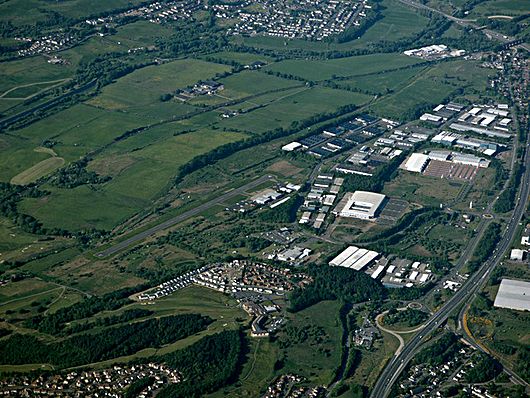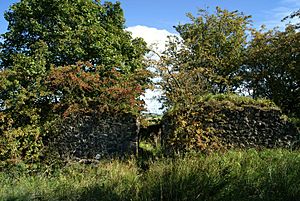Westerwood facts for kids
Westerwood is a place in the north-east of Cumbernauld, a town in North Lanarkshire, Scotland. It's known for its history as a Roman fort. You can even watch a video that shows what the fort might have looked like!
In recent years, many new homes have been built here. These homes are often found near the Westerwood Hotel and its golf course. The golf course was designed by famous golfers Seve Ballesteros and Dave Thomas. It's located on the north side of Cumbernauld, not far from Cumbernauld Airport.
People who live in Westerwood have their own group called the Westerwood Community Council. This group helps local residents and has a special committee. Nearby villages include Dullatur to the north-west and Castlecary to the east.

Contents
Discovering Westerwood's Roman Past
Westerwood is a very important historical site because it was once home to a Roman fort. This fort was part of the Antonine Wall, a huge barrier built by the Romans across Scotland.
The Antonine Wall and Nearby Forts

The Westerwood fort had other Roman forts as neighbors. To its west was Croy Hill, and to its east was Castlecary. One of the best-preserved parts of the Antonine Wall can be seen at Tollpark, between the Castlecary and Westerwood forts.
There might have been a signal tower at Garnhall. From this tower, people could probably see both the Westerwood and Castlecary forts. You can visit a part of the wall to the east by using a kissing gate behind the Castlecary Hotel. If you want to see the wall to the west, you can park at Dullatur or Croy.
Life in a Roman Fort
Most Roman forts along the Antonine Wall held about 500 soldiers. Bigger forts, like Castlecary, could hold around 1000 soldiers. Even though soldiers weren't allowed to marry, it's thought that women and children might have lived there too. There were also likely large groups of civilians living around the forts.
Unearthing Roman Treasures
Archaeologists have dug up the Westerwood fort several times. These digs happened in 1932, 1974, and from 1985 to 1988. Sir George Macdonald, a famous archaeologist, wrote about his findings from the 1932 excavation.
Many interesting items have been found near Westerwood, especially at a place called Arniebog. One important find was a "distance slab." This is a stone carving that shows how much of the wall a Roman army unit built. The slab found here shows a sea-god and a tied-up captive. You can see this slab today at the Hunterian Museum in Glasgow.
Another discovery was an altar without any writing on it. Other artifacts include a stone with a diamond pattern and a grey jar. An altar dedicated to the god Silvanus and the Sky was also found. This altar was given by a Roman officer named Verecundus and his wife.
Interestingly, the pottery found at Westerwood is different from other pottery found along the Antonine Wall. Some experts think that this rough pottery was made right there in Westerwood by a local potter.






